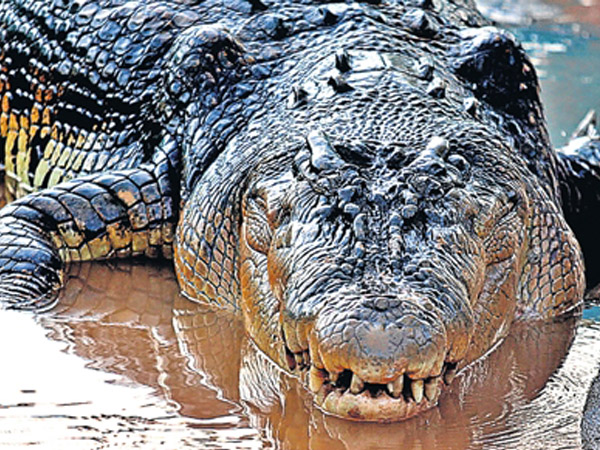Lolong died of pneumonia – Paje
MANILA, Philippines—“Lolong,” the world’s largest captive crocodile whose sudden death stunned the public earlier this month, may have been done in by cardiac arrest arising from pneumonia, initial findings from the necropsy showed.
Environment Secretary Ramon Paje said the one-ton reptile was suffering from “late-stage pneumonia” and went into cardiac failure, according to a preliminary report submitted by a team of veterinarians and biologists sent to examine the animal.
A more detailed report on the cause of Lolong’s death will be released in two weeks, Paje said in a statement. Local officials said Lolong flipped over with a bloated stomach in his enclosure on Feb. 10, a year and five months after his capture.
“The full necropsy report, which will be out within the next two weeks, will provide the details of the medical investigation that will help us determine the factors that contributed to Lolong’s health problems and eventual death,” Paje said.
According to the initial report, the 6.17-meter-long Lolong was found to have lesions in major organs, such as the heart, lungs, kidneys and intestines, said Protected Areas and Wildlife Bureau Director Theresa Mundita Lim.
Article continues after this advertisement“Findings indicate that there could have been a chronic infection that may have been aggravated by stress,” Lim said.
Article continues after this advertisementTissues collected from Lolong’s major organs were examined by experts from the University of the Philippines-Los Baños College of Veterinary Medicine.
Lim said she hoped that Lolong’s case could lead to a better understanding of the condition of crocodiles in the wild, “as well as how to better manage them while in captivity.”
She said the study could also help determine the state of the Agusan Marsh, where Lolong was captured in 2011, to improve its condition for the benefit of the wildlife there and the communities that depend on its resources.
Until his death, Lolong was the star attraction of an eco-tourism park and research center on the outskirts of the small farming town of Bunawan in Agusan del Sur, where he was caught. Government officials deemed it unsafe to release him back to the wild, owing to his massive size and recent crocodile attacks on humans.
A team of hunters captured the crocodile with steel cable traps during a 24-day hunt. It had been blamed for attacks on livestock and people, including a child who was killed in 2009 and a fisherman who went missing.
The reptile was named after Ernesto “Lolong” Conate, a government environmental officer who worked out the plans for capturing the beast but died a few days before it was actually captured.
Lolong was caught by a team of crocodile experts and villagers near Lake Mihaba, one of the several lakes crisscrossing Agusan Marsh, the country’s largest marshland.
